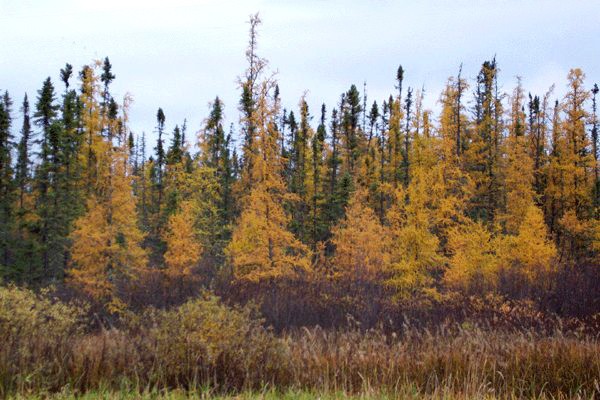Finzel Marsh Preserve in Maryland is a sensory pleasure. Visitors are drawn in by the scent of red spruce and the cry of the locally uncommon alder flycatcher. "You can't see anything, so be careful," Landau advises as she makes her way through the icy maze.
The Nature Conservancy (TNC) owns the preserve in the middle Appalachians of far western Maryland, protecting a unique boreal fen. The American larch (Larix laricina), sometimes known as the tamarack tree, is a deciduous conifer that is the cause of Landau's stay in the swamp.
Finzel swamp provides a year-round climate for the locally threatened larch and other more northern flora and fauna because it is located within a "frost pocket," a microclimate where cold air is confined by the neighboring slopes and prone to regular frosts. It's as though a piece of the Pleistocene has survived the warmer age to remind us of life in these ancient mountains.
Missing Larches

The larch has been lost in four locations in western Maryland due to changes in temperature and water conditions. The Cranesville marsh on the Maryland-West Virginia border, also owned by TNC, is home to the only other population this far south - the tree is native to Canada and found in the upper northeastern US.
When she first arrived at TNC, Finzel was one of the first sites she worked on since it was a high-priority site for restoration, but the larch was progressively dying, Landau explains. The natural water flow had been disrupted by homes on each end of the reserve and a road through the swamp. The larch was being killed by standing water, but repeated attempts to drain beaver dams from culverts beneath the road had failed.
Landau adds that they went to the swamp regularly to maintain their beaver baffles. Baffles are lengthy pipes used to reduce the negative impacts of beaver dams, such as flooded roadways, property damage, and larch regrowth in Finzel's case.
The pipelines allow some water to flow past the dam without bursting it, preserving the wetland's natural ecology. Dams erected beneath bridges, on the other hand, must be dismantled. Landau explains that otherwise, the beaver dams force the water to back up and drown the larch.
Restoring Flow
While restoring a more natural water flow benefits the entire marsh and protects the larch trees from flooding, the trees also require room to rejuvenate.
Three apertures were constructed under mature larch at first. Because of the possibility of rising water, the bushes had to be cut during winter while the marsh was frozen.
Landau could only examine the development of the trees in the clearings when the road was restored, and the water levels had subsided. Thankfully, the results of this "wild gardening" method were fruitful.
Landau and her team must go through thigh-deep muck and nearly impassable alder thickets to reach the larch clearings. Shearing and pruning commence as they arrive in an opening. Enormous mounds of shrub trimmings develop next to the larch and swamp ferns.
In the clearing Landau is visiting today, the rejuvenation is palpable. She gestures to a grove of young, nearly two-meter-tall larch trees alongside a larger, mature larch. She also comes upon a young tree that is just over ankle height. Autumn's beautiful golden needles, the larch's most distinctive feature, are beginning to appear on some.
Spruce Population
Finzel's red spruce population, the reserve's other northern conifer, is also being re-established by Landau. Because of their seclusion, the populations in Finzel and Cranesville marshes have minimal genetic variety, according to a University of Vermont research. Both areas have now been planted with locally obtained spruce seedlings.
Knowing that the trees are still alive and only require a little aid from them to clear the road gives me a tremendous feeling of pleasure that she's one of their stewards and that we're doing the right thing.
Related Article: Flourishing Plants in Antarctica Signals Worsening Climate Crisis
For similar news, don't forget to follow Nature World News!
© 2025 NatureWorldNews.com All rights reserved. Do not reproduce without permission.





